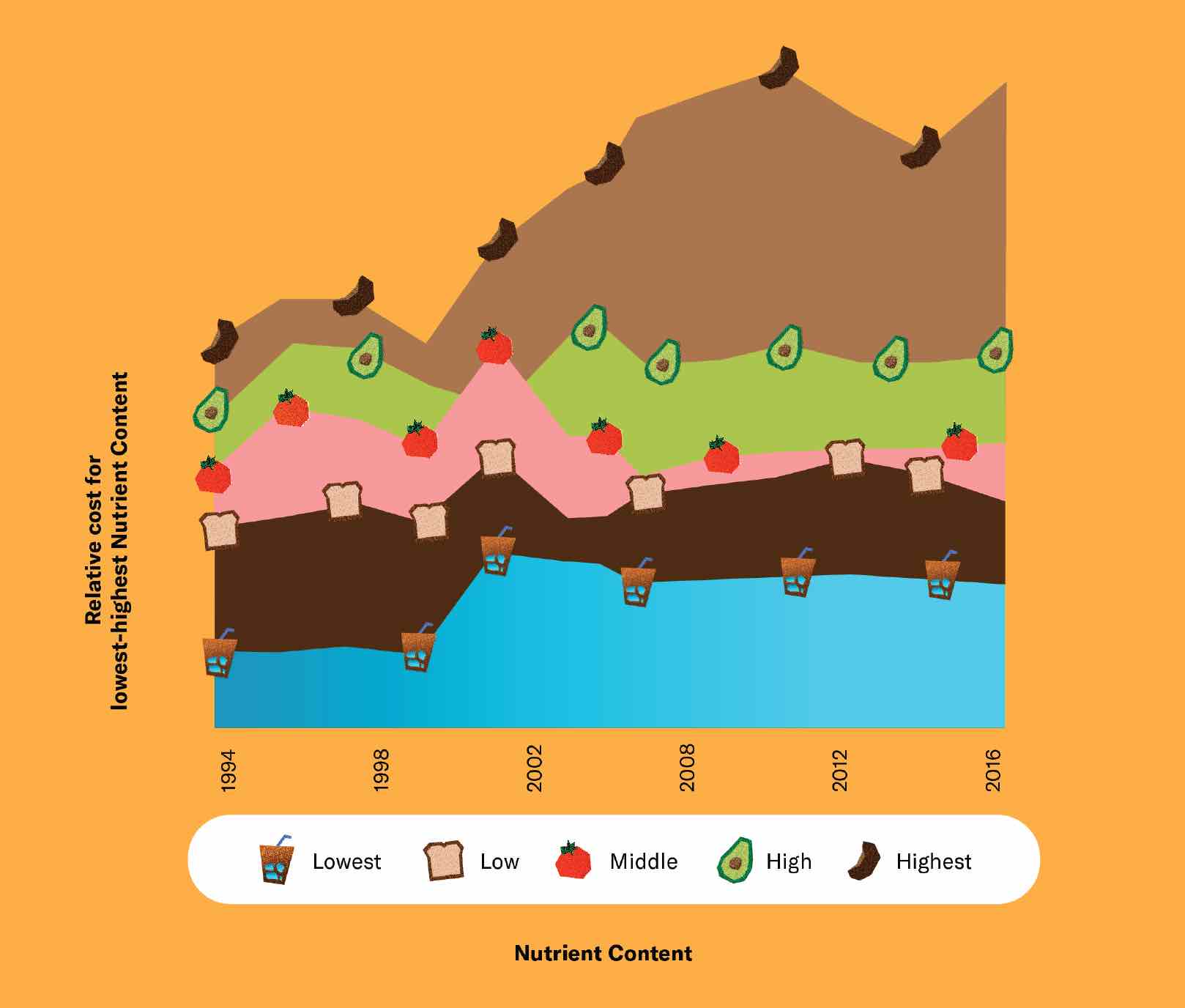Gone are the days of Tony the Tiger and Cap’n Crunch. In October 2020, the Mexican government implemented the New Mexico Food Law (NOM-051), which requires foods that fail to meet certain nutritional standards to include front-of-package health warnings and prohibits cartoon advertising on unhealthy food products. This law comes in response to a spike in diet-related health conditions: Diabetes and cardiovascular disease account for 14 and 24 percent of total deaths in the nation, respectively. By solely focusing on package labeling and nutritional information, however, the law fails to address systemic factors at the core of food consumption patterns and diet-related conditions in Mexico, particularly income inequality.
For much of the 20th century, Mexico relied on agriculture to sustain its population. During the 1990s, a wave of neoliberal reforms washed over the nation, bringing with them the North American Free Trade Agreement (NAFTA) and opening Mexico’s economy to foreign trade. By eliminating import tariffs on goods from Canada and the United States, NAFTA led to a period of economic growth and foreign investment in Mexico. This elimination of trade barriers also enabled massive importation of cheap processed foods, which quickly replaced traditional staple ingredients in the Mexican diet such as maize, beans, and rice. Simultaneously, modern agricultural methods were introduced, lowering wages and forcing workers to move to cities, where they adopted more sedentary lifestyles.
The rising prevalence of heart disease and diabetes demonstrates the impact of these shifts. This concern is not limited to Mexico: Several other Latin American countries have recently seen spikes in diet-related health conditions. In Chile, the problem prompted the government to enact the 2016 Food Law, which required companies to eliminate caricatures from packaging and properly label nutritional information. The law proved successful: Researchers found that 91.3 percent of citizens surveyed reduced their purchases of supposedly unhealthy products after the law’s enactment.
The success of the Chilean law inspired Mexico’s passage of its own similar measure, the aforementioned NOM-051. Like Chile’s law, NOM-051 requires companies to assess and clearly present the health impacts of their products. The health assessment is derived from the Pan American Health Organization’s standards on appropriate levels of sugar, calories, sodium, trans fat, saturated fat, and caffeine. Products failing to meet health standards must include a large warning marker on the front of their packaging indicating poor nutritional content. Products that display these seals are also prohibited from having drawings or images on their packaging. Mascots, such as those on cereal boxes, were removed as part of an effort to eliminate advertising directed towards children.
Despite positive intentions to improve the nation’s health, NOM-051 fails to address the root cause of poor nutritional choices: poverty. The law focuses on shifting individuals’ behavior rather than targeting the low wages that push them to consume cheap, calorie-rich, and processed foods. Foods that pass the new health standards are often more expensive and, with 42 percent of Mexico’s population living in poverty in 2018, less accessible to much of the population. For many, the choice to purchase cheap processed foods does not always come down to preference, but the inability to pay for healthier options.
Inaccurate portrayal of nutritional content is yet another shortcoming of NOM-051. While the government hoped the new labeling procedures would simplify consumers’ interpretation of nutritional content, consumers often erroneously construe the lack of a seal as evidence that a product is healthy. A study of Chile’s law confirmed this to be the case: 68.1 percent of survey respondents viewed the lack of a seal as evidence of the food’s robust nutritional value. For many products, however, this is far from true, as nutritional labels fail to indicate many harmful ingredients. Take, for instance, diet sodas. These beverages contain a wide range of chemicals and artificial sweeteners, yet because they lack a warning label, they falsely lead consumers to believe that the drinks do not pose a health risk. Thus, the law fails to comprehensively educate consumers on the dangers of processed foods.
With the second phase of NOM-051 set to start October 1, 2023, companies have time to adjust their formulas or else remain subject to nutritional labeling. Unfortunately, the surface-level nature of this public health effort, as opposed to an approach that addresses the social determinants of unhealthy food choices, limits its chance of long-term effectiveness. Going forward, truly sustainable public health initiatives must target the systemic issues in which consumption patterns are rooted.
